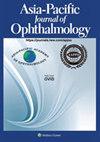Controversies, consensuses and guidelines on posterior chamber phakic intraocular lens for the correction of myopia and myopic astigmatism in healthy phakic eyes by the Academy of Asia-Pacific Professors of Ophthalmology (AAPPO) and the Asia-Pacific Myopia Society (APMS)
IF 4.5
3区 医学
Q1 OPHTHALMOLOGY
引用次数: 0
Abstract
Phakic Intraocular Lens (pIOL) has been studied for correction of high myopia and myopic astigmatism long before the advent of laser refractive surgery. It offers excellent visual and refractive outcomes, but the inherited risk of intraocular surgery cannot be overlooked. The posterior chamber pIOL (PC-pIOL), designed to be placed in the ciliary sulcus, may offer additional advantages compared to its anterior chamber counterparts. Given the complexity of sulcus anatomy and individual variations, controversies exist regarding perioperative management, implant selection, and operative techniques, necessitating standardisation. Given the emergence of novel approaches and long-term clinical data, a panel comprising 19 international experts from 9 countries/territories was formed by the Academy of Asia-Pacific Professors of Ophthalmology (AAPPO) and the Asia-Pacific Myopia Society (APMS). The panel critically reviewed the subject and synthesised 58 consensus statements that aim to provide evidence-based, real-world practice recommendations for optimal outcomes in PC-pIOL surgery.
亚太眼科教授学会(AAPPO)和亚太近视学会(APMS)关于后房型晶状体人工晶状体矫正健康晶状眼近视散光的争议与共识。
早在激光屈光手术出现之前,人们就研究了人工晶状体(Phakic Intraocular Lens, pIOL)用于矫正高度近视和近视散光。它提供了良好的视力和屈光效果,但眼内手术的遗传风险不容忽视。后房pIOL (PC-pIOL),被设计放置在睫状沟中,与前房相比,可能具有额外的优势。鉴于沟解剖的复杂性和个体差异,在围手术期管理、植入物选择和手术技术方面存在争议,需要标准化。鉴于新方法的出现和长期的临床数据,亚太眼科教授学会(AAPPO)和亚太近视学会(APMS)组成了一个由来自9个国家/地区的19名国际专家组成的小组。该小组对该主题进行了严格审查,并综合了58项共识声明,旨在为PC-pIOL手术的最佳结果提供基于证据的现实实践建议。
本文章由计算机程序翻译,如有差异,请以英文原文为准。
求助全文
约1分钟内获得全文
求助全文
来源期刊

Asia-Pacific Journal of Ophthalmology
OPHTHALMOLOGY-
CiteScore
8.10
自引率
18.20%
发文量
197
审稿时长
6 weeks
期刊介绍:
The Asia-Pacific Journal of Ophthalmology, a bimonthly, peer-reviewed online scientific publication, is an official publication of the Asia-Pacific Academy of Ophthalmology (APAO), a supranational organization which is committed to research, training, learning, publication and knowledge and skill transfers in ophthalmology and visual sciences. The Asia-Pacific Journal of Ophthalmology welcomes review articles on currently hot topics, original, previously unpublished manuscripts describing clinical investigations, clinical observations and clinically relevant laboratory investigations, as well as .perspectives containing personal viewpoints on topics with broad interests. Editorials are published by invitation only. Case reports are generally not considered. The Asia-Pacific Journal of Ophthalmology covers 16 subspecialties and is freely circulated among individual members of the APAO’s member societies, which amounts to a potential readership of over 50,000.
 求助内容:
求助内容: 应助结果提醒方式:
应助结果提醒方式:


